OMAD Meal Plan Secrets: What Nobody Tells You About Eating Once a Day

Three years ago, I was that person eating six small meals a day and still feeling exhausted by 3 PM. Then a friend mentioned she was eating just once a day and had more energy than ever. I thought she was crazy. Turns out, I was the crazy one for not trying it sooner.
The One Meal a Day (OMAD) diet has gained celebrity endorsements from Bruce Springsteen to Chris Martin, but the reality extends far beyond Hollywood appeal. Most adults require around 2000 calories per day, and “it can be a challenge to fit 2000+ calories into one meal” according to Dr. Kiltz’s research on OMAD meal planning.
Here’s what I wish someone had told me before I started: OMAD isn’t just about when you eat—it’s about completely rewiring how your body works, navigating a food-obsessed society, and making every single bite count like never before. This guide covers everything I learned the hard way so you don’t have to.
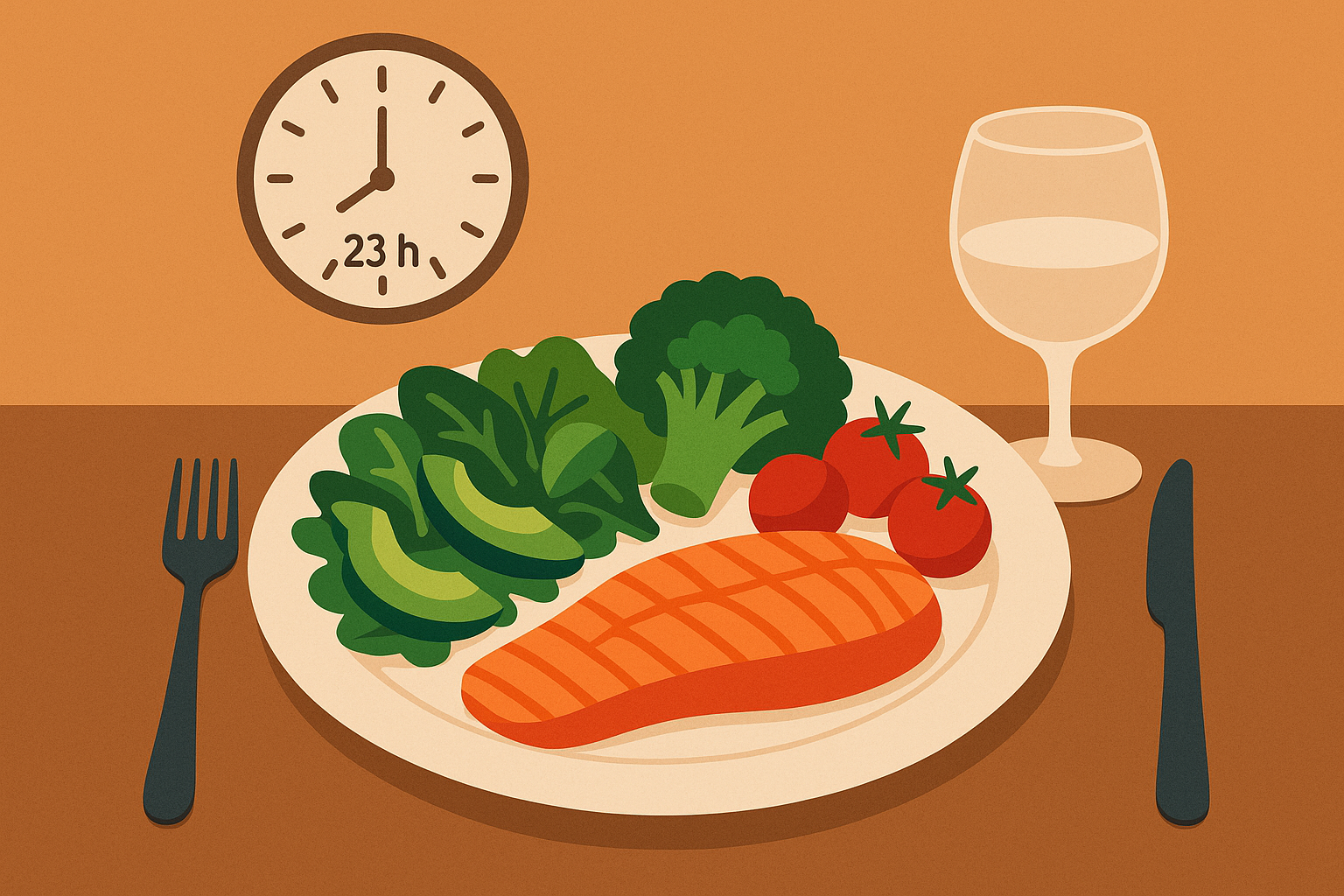
Table of Contents
- How Your Body Basically Rewires Itself
- Surviving Social Situations Without Becoming a Hermit
- Making Every Bite Count (Without Going Crazy)
- Actually Sticking With It Long-Term
TL;DR
- Your eating window timing matters way more than the food itself—find your personal sweet spot, don’t just copy what others do
- Your body goes into serious cleanup mode (autophagy) between hours 16-20 of fasting—this is where the magic happens
- Social situations become your biggest challenge, not hunger—you need actual strategies for family meals and work events
- Every bite must deliver maximum nutrition since you’re only eating once—but don’t stress yourself into obsession
- Most people quit OMAD because they’re too rigid, not because the diet doesn’t work—flexibility is survival
- Your hormones will throw a 2-4 week tantrum while adjusting—this is normal and temporary
How Your Body Basically Rewires Itself
Let me be honest with you—OMAD turns your body into a completely different machine. When I first started, I expected to just feel hungry and lose some weight. What I didn’t expect was how it would change my sleep, my brain function, and even when I naturally felt alert throughout the day.
Your body becomes incredibly efficient when you feed it once daily. But this transformation doesn’t happen overnight, and it definitely doesn’t happen without some bumps along the way.
Your Internal Clock Gets a Complete Makeover
Think of your single eating window as the conductor of your body’s orchestra. Everything starts syncing up to this one daily event—when you feel sharp, when you get sleepy, even when your digestion works best.
I used to be a zombie until my second cup of coffee. Now I wake up naturally alert because my body knows exactly when fuel is coming. It’s weird how predictable your energy becomes once you establish this rhythm.

Finding Your Sweet Spot Takes Some Detective Work
Here’s what every generic OMAD guide gets wrong: they tell everyone to eat at the same time. But your optimal window depends on your unique energy patterns, work schedule, and how your body naturally functions.
I spent weeks eating at 6 PM because that’s what I read online, but I felt terrible. Turns out my natural energy crash happens around 9 PM, so eating at 4 PM works perfectly for my rhythm.
How to find your timing:
- Track when you naturally feel energetic and when you crash (without changing anything for a week)
- Schedule your eating window 4-6 hours before your natural energy dip
- Pay attention to your sleep quality and morning alertness
- Adjust by 30-minute increments until it feels right
Sarah, who works in marketing, discovered she peaked at 2 PM and crashed around 8 PM. She moved her OMAD window to 4-5 PM, and within two weeks her sleep improved dramatically and those afternoon energy crashes disappeared completely.
Seasons Will Mess With Your Perfect Timing
Nobody talks about this, but your body’s needs change with the seasons. What works perfectly in summer might leave you dragging in winter.
I learned this when my perfect 4 PM eating window suddenly felt wrong in December. Turns out, shorter daylight hours shifted my natural rhythm. Now I eat 30 minutes earlier in winter and extend my window slightly in summer for better social integration.
The Cellular Cleanup Process That Changes Everything
This is where OMAD gets really interesting. After about 16 hours without food, your body shifts into this incredible cleanup mode called autophagy. Think of it like Marie Kondo for your cells—everything that doesn’t spark joy (or function properly) gets tossed out.
“During fasting, insulin levels drop, and the body starts using stored energy, such as glycogen and fat, for fuel” explains registered dietitian Ana Reisdorf. This is when your body starts accessing repair processes that most people never experience. Understanding how to activate autophagy in your cells becomes crucial for maximizing your omad diet meal plan benefits.
Hours 16-20: When Your Body Becomes a Repair Shop
This is when the real magic happens. Most people break their fast right before this crucial window begins, missing out on the most powerful benefits.
| Fasting Hour | What’s Happening | How You’ll Feel |
|---|---|---|
| 12-16 hours | Your body starts burning stored fat | Might feel a bit tired |
| 16-18 hours | Mental clarity kicks in | Surprisingly sharp and focused |
| 18-20 hours | Peak cellular repair mode | Almost supernatural mental clarity |
| 20-24 hours | Deep metabolic reset | Growth hormone surges |
The mental clarity that hits around hour 20 is something you have to experience to believe. I remember the first time it happened—I was working on a complex project that had been frustrating me for days, and suddenly the solution seemed obvious. It was like someone had cleaned the fog off my brain.
Beyond 20 Hours: The Deep Renewal Zone
This is where OMAD separates itself from shorter fasting periods. You’re accessing cellular renewal states that most people never reach. Your body starts regenerating stem cells and optimizing systems that have been neglected for years.
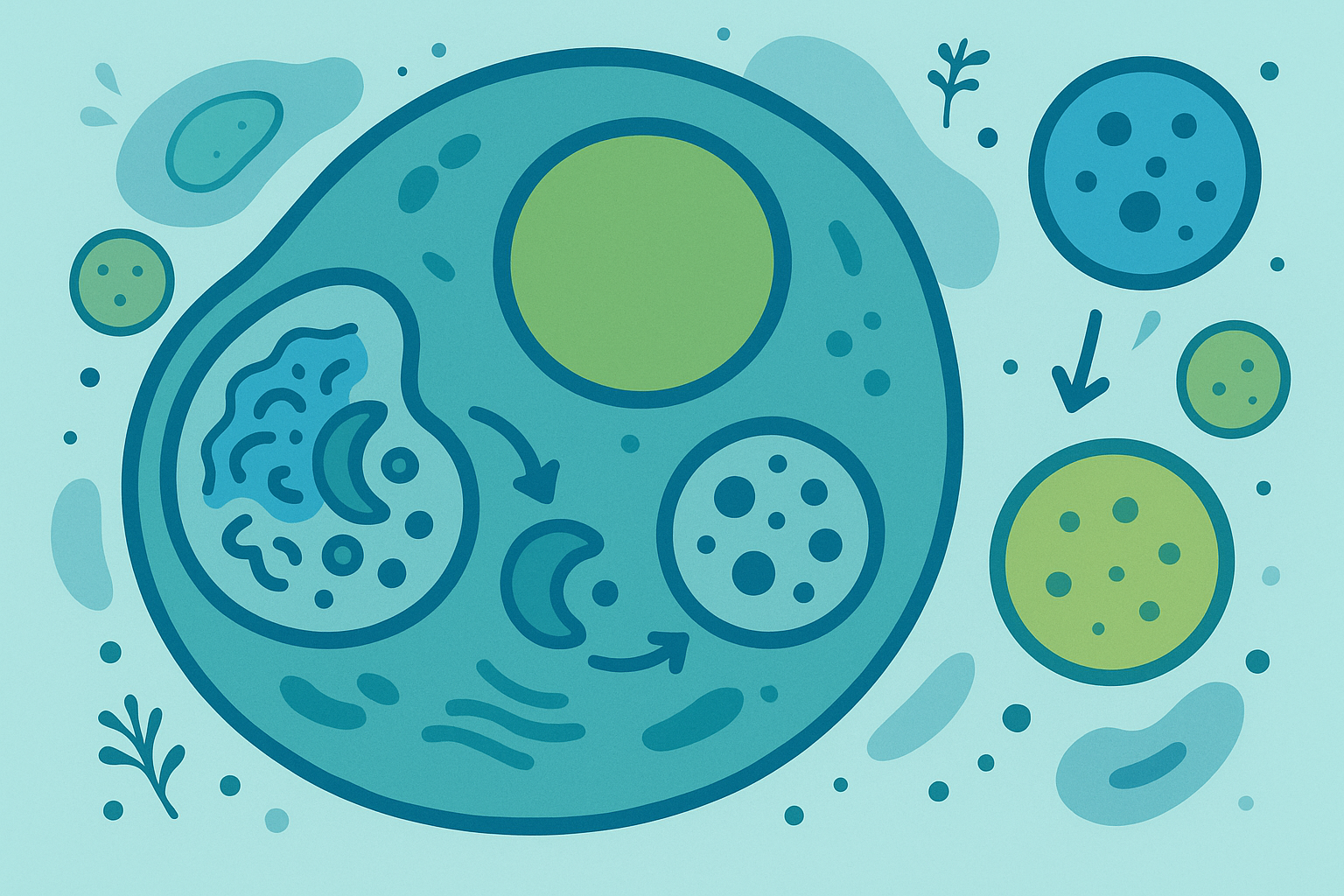
The 30 Minutes Before You Eat Can Make or Break Everything
How you prepare to break your fast determines whether you’ll feel amazing or spend the evening regretting your food choices. I learned this the hard way when I broke my first 22-hour fast with a massive burrito. My digestive system was not pleased.
Think of your stomach like a car that’s been sitting in the garage for 20 hours. You wouldn’t floor it immediately—you’d warm it up first.
Your Hormones Will Throw a 2-4 Week Tantrum
Let’s talk about the elephant in the room—you’re probably wondering if your metabolism will crash or if you’ll feel terrible. I had the same fears. Here’s what actually happens during the adjustment period.
Research from beketo.uk shows that “adaptation to the OMAD diet usually takes 2-3 weeks, during which the body learns to use fat stores more efficiently”. Your body isn’t broken—it’s just learning a new way to operate.
Your Insulin Sensitivity Gets a Complete Upgrade
Extended fasting allows your insulin receptors to basically reset themselves. But you can accidentally sabotage this process if you break your fast with high-sugar foods. After 20+ hours of fasting, your body becomes incredibly sensitive to whatever you eat first.
Growth Hormone Production Goes Through the Roof
Your body naturally increases growth hormone during extended fasting, but timing and food choices can maximize this anti-aging benefit. Most people accidentally mess this up with poor meal composition.
Your Adrenals Will Protest (But It’s Temporary)
The first few weeks can stress your adrenal system as your body learns this new schedule. Without proper support, this stress can make you feel worse instead of better.
How to support yourself through the transition:
- Prioritize stress reduction during the first month
- Monitor your energy and mood daily
- Increase electrolytes to support adrenal function
- Be patient—this phase is temporary
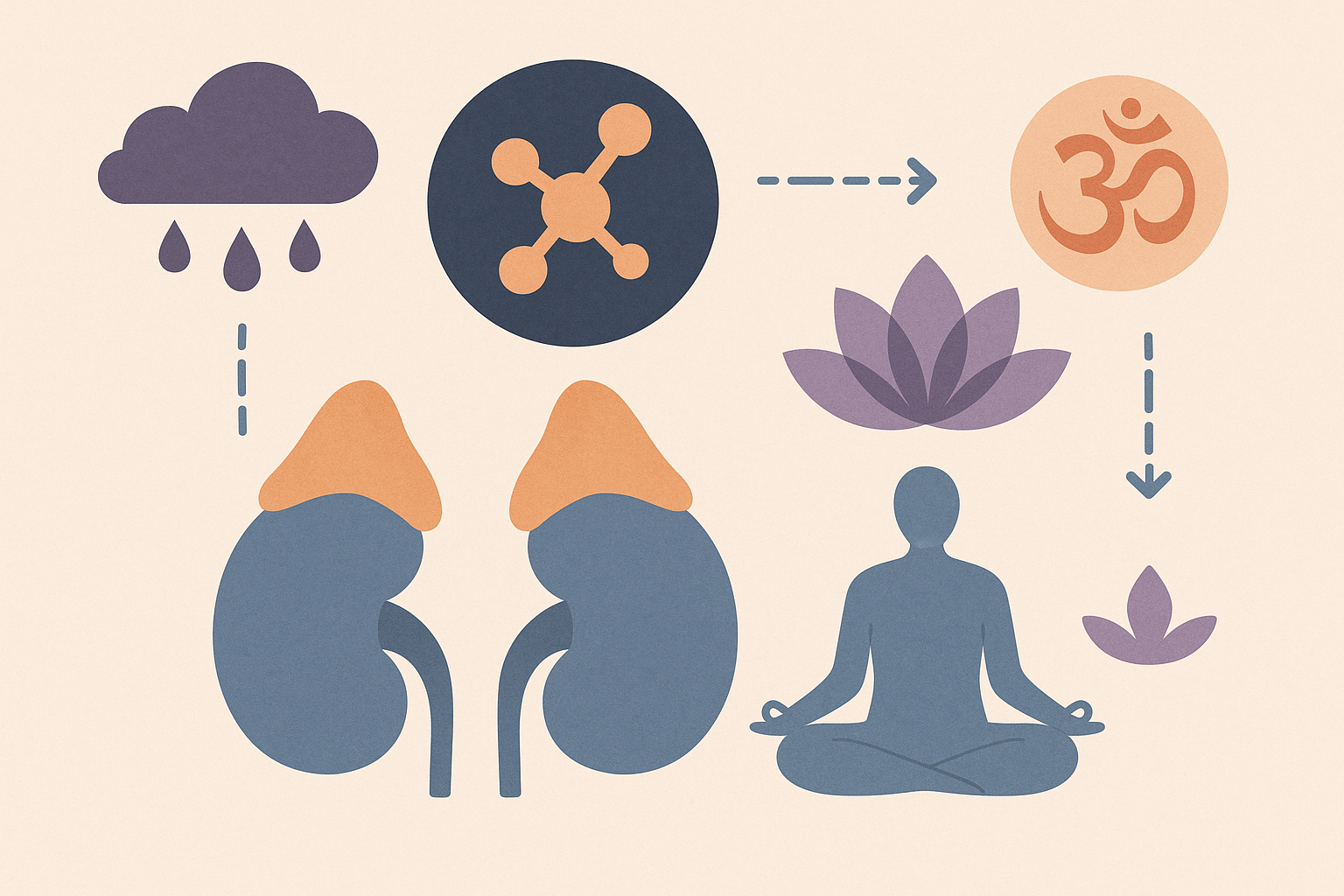
Surviving Social Situations Without Becoming a Hermit
Nobody warned me that the hardest part of OMAD wouldn’t be the hunger—it would be explaining to my coworkers why I wasn’t grabbing pizza during our “mandatory fun” lunch meeting.
Here’s the thing: we live in a world where food equals love, celebration, and connection. When you start eating once a day, you’re basically challenging every social norm around meals. But don’t worry—I’ve figured out how to navigate this without becoming a hermit.
Understanding everything about intuitive eating helps you maintain a healthy relationship with food while following OMAD in social settings.
Family Dynamics Will Get Weird (And That’s Okay)
My mom still thinks I have an eating disorder. Last Thanksgiving, she literally followed me around the kitchen asking if I was “okay” because I wasn’t snacking on appetizers at 2 PM. I get it—food is how families show love.
Handling the Food Police in Your Life
Every family has that one person who becomes the self-appointed food monitor. You know the type—they’ll comment on everything you’re not eating and make it their personal mission to “fix” you.
What actually works:
- Have one honest conversation about your health goals, then redirect future comments with humor
- Become the meal prep hero for family gatherings (cook what works for your window)
- Show up with energy and good health—let your results speak louder than their concerns
Mike restructured Sunday family dinners by shifting the meal time from 2 PM to 6 PM to align with his OMAD window. He became the designated meal coordinator, creating elaborate family feasts that satisfied everyone while keeping him on track. His family initially resisted but eventually appreciated the higher-quality, more intentional meals.
My brother used to joke that I was “starving myself” every Sunday dinner. Instead of getting defensive, I started bringing elaborate homemade dishes that everyone loved. Now he asks me for recipes instead of giving me nutrition advice.
Work Events Are Social Landmines
Nothing says “awkward” like being the only person not eating at a team lunch. I’ve learned that most people don’t actually care what you’re eating—they care that you’re participating socially.
Survival strategies that work:
- Order a drink and focus on the conversation
- Suggest meeting times that work with your eating window when possible
- Master the art of “I ate earlier” without making it a big deal
The key is confidence. If you act like it’s totally normal, most people will accept it and move on.

Your Relationship with Food Will Do a Complete 180
This might sound dramatic, but OMAD changed how I think about food entirely. When you only eat once a day, you can’t mindlessly munch through emotions or boredom. Every meal becomes intentional.
I used to eat because I was stressed, happy, sad, or just because it was “time” to eat. Now I eat because I’m actually hungry and my body needs fuel. It’s weirdly liberating.
The Restriction That Actually Creates Freedom
When you’re only eating once per day, every meal becomes an event. I found myself appreciating flavors and textures in ways I never had before. Food became less about filling time and more about genuine nourishment.
Walking the Line Between Structure and Obsession
Long-term success requires flexibility within structure. Too much rigidity leads to obsessive behaviors, while too much flexibility undermines the benefits. I’ve learned to treat OMAD like a helpful framework, not a rigid rule.
Making Every Bite Count (Without Going Crazy)
Okay, let’s talk about the elephant in the room—fitting all your nutrition into one meal sounds impossible, right? I thought so too. Turns out, it’s not about eating a massive plate of food. It’s about being strategic.
Your Digestive System Needs a Heads Up
Think of your stomach like a car that’s been sitting in the garage for 20 hours. You wouldn’t floor it immediately—you’d warm it up first. Same principle applies here.
I learned this the hard way when I broke my first 22-hour fast with a huge burrito. Let’s just say my digestive system was not pleased, and I spent the evening r egretting my life choices.
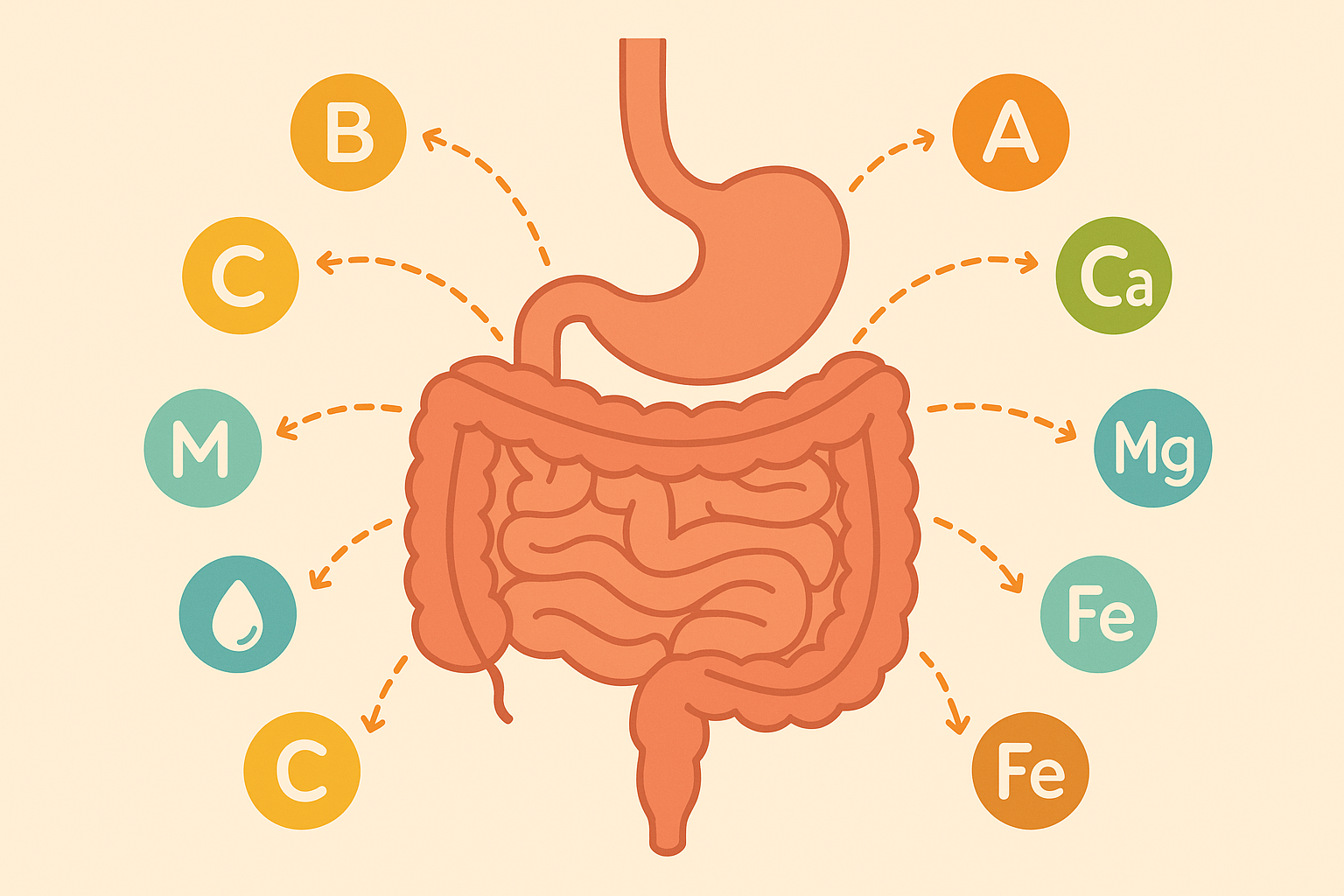
The 30-Minute Pre-Game Ritual That Changes Everything
This isn’t some mystical ceremony—it’s just giving your body a gentle wake-up call. Incorporating strategies from simple ways to beat bloat and improve digestion helps ensure your single meal doesn’t cause digestive distress.
My personal routine:
- Start with room temperature water and a pinch of sea salt (tastes terrible, works amazingly)
- Sip some ginger tea or take a shot of apple cider vinegar (your stomach will thank you)
- Begin with something light—maybe some bone broth or a small salad
Think of it as stretching before a workout. You wouldn’t jump into heavy lifting without warming up, so don’t shock your digestive system either.
Food Combinations That Actually Matter
I’m not going to overwhelm you with a chemistry lesson, but there are a few partnerships that make a real difference:
| Nutrient Pairing | Primary Food | Enhancement Food | Why It Works |
|---|---|---|---|
| Iron + Vitamin C | Spinach | Bell peppers | 3-4x better iron absorption |
| Fat-soluble vitamins + Healthy fats | Carrots | Avocado | 5-10x more vitamin A absorbed |
| Calcium + Magnesium | Kale | Pumpkin seeds | Perfect mineral balance |
| Protein + B vitamins | Lentils | Nutritional yeast | Complete amino acid profile |
It’s not rocket science, but these little tweaks add up over time.
Supplements on OMAD: What I Wish Someone Had Told Me
Regular supplement advice goes out the window with OMAD. I made every mistake in the book before figuring out what actually works. Understanding which dietary supplements to take daily becomes essential for supporting your nutritional needs on OMAD.
Mistakes I made so you don’t have to:
- Taking fat-soluble vitamins during my fast (waste of money and potentially broke my fast)
- Trying to cram all my supplements into a 20-minute window (hello, nausea)
- Ignoring electrolytes during fasting hours (headache city)
Supporting Your Fast Without Breaking It
Certain supplements can enhance your fasting state without disrupting autophagy or ketosis. Electrolytes during your fast are non-negotiable—they prevent headaches and support your adrenals through the transition.
Strategic Supplement Timing With Your Meal
What actually works:
- Electrolytes during your fast (magnesium and sea salt are your friends)
- Fat-soluble vitamins with your meal
- Spread B vitamins throughout your eating window if possible
Lisa developed a supplement protocol where she took magnesium and sea salt during her fast to prevent headaches, then consumed a comprehensive multivitamin, omega-3s, and vitamin D with her evening meal. She split B-complex vitamins into thirds, taking them every 20 minutes during her eating window to maximize absorption without overwhelming her system.
My current routine: magnesium in the morning, comprehensive multivitamin with dinner, and I space out my B-complex over my eating window. No more supplement-induced stomach aches.
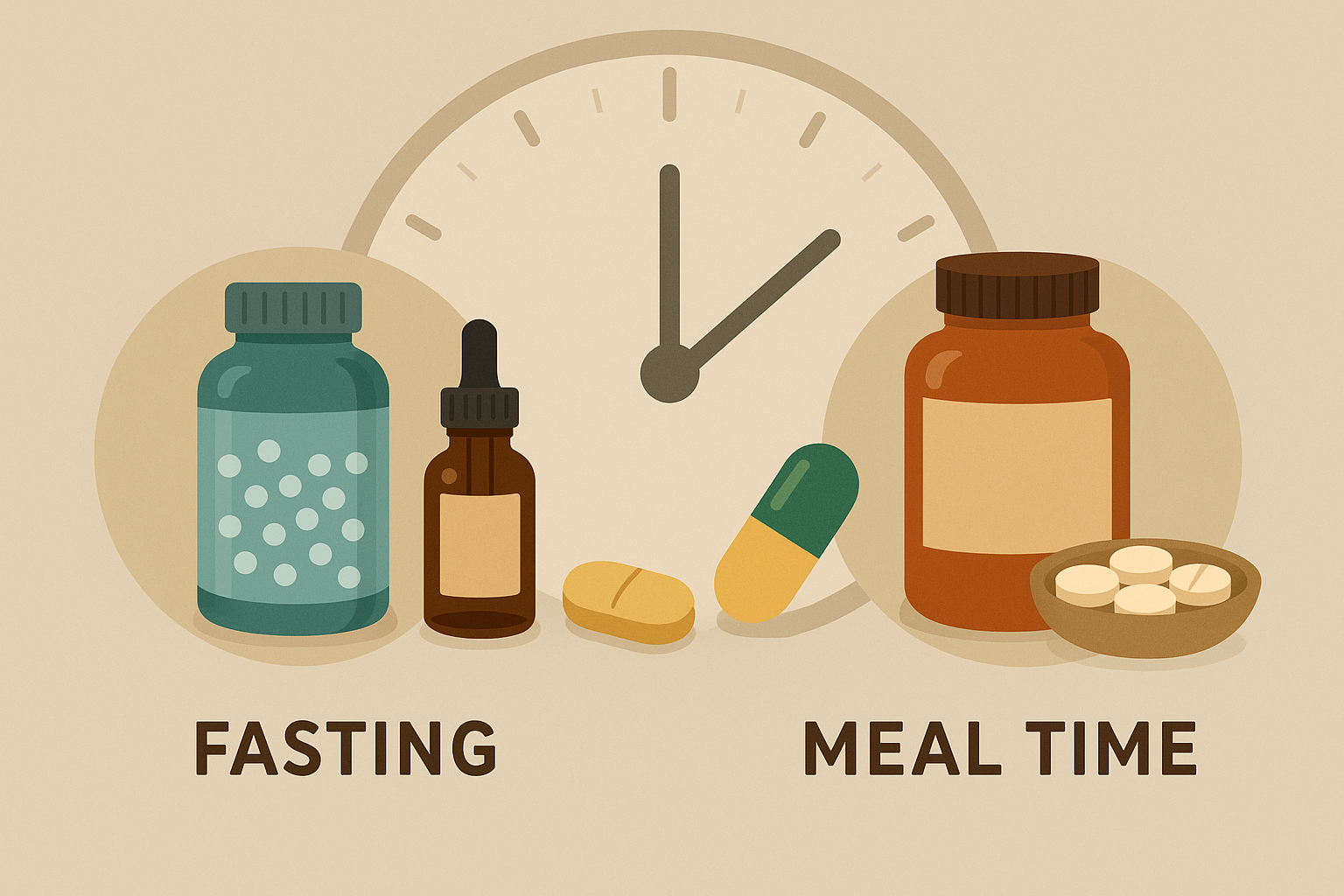
Actually Sticking With It Long-Term
Here’s what every OMAD blog fails to mention: life doesn’t stop because you’re eating once a day. You’ll have stressful weeks, family emergencies, holidays, and days when following any eating plan feels impossible.
The people who succeed long-term aren’t the ones who never break their routine—they’re the ones who know how to get back on track without throwing in the towel completely.
When Life Gets Crazy (And It Will)
I’ve been through job changes, family crises, and moves while doing OMAD. Some weeks I nailed it, other weeks I ate whenever I could manage. The key is having a plan for both scenarios.
Your Stress Response Strategy
During my most stressful month at work, strict OMAD made everything worse. I was already running on fumes, and adding the stress of a rigid eating schedule was the last straw.
What I learned:
- High stress + strict OMAD = recipe for burnout
- It’s okay to switch to 16:8 during crazy periods
- The goal is supporting your health, not adding stress
Now when I know a stressful period is coming, I proactively adjust my eating window. I’d rather maintain some structure than abandon everything completely.
Special Occasions Without the Guilt
Birthdays, holidays, and celebrations will happen. You have two choices: become a social hermit or learn to be flexible.
I choose flexibility. When my best friend got married, I knew I’d be eating cake at 3 PM and dinner at 7 PM. Instead of stressing about it, I planned a modified eating window for the weekend and got back to my normal routine on Monday.
My flexibility framework:
- Plan modifications in advance when possible
- Set a specific return date to your regular schedule
- Focus on enjoying the moment instead of food guilt
- Remember that one day won’t undo weeks of progress
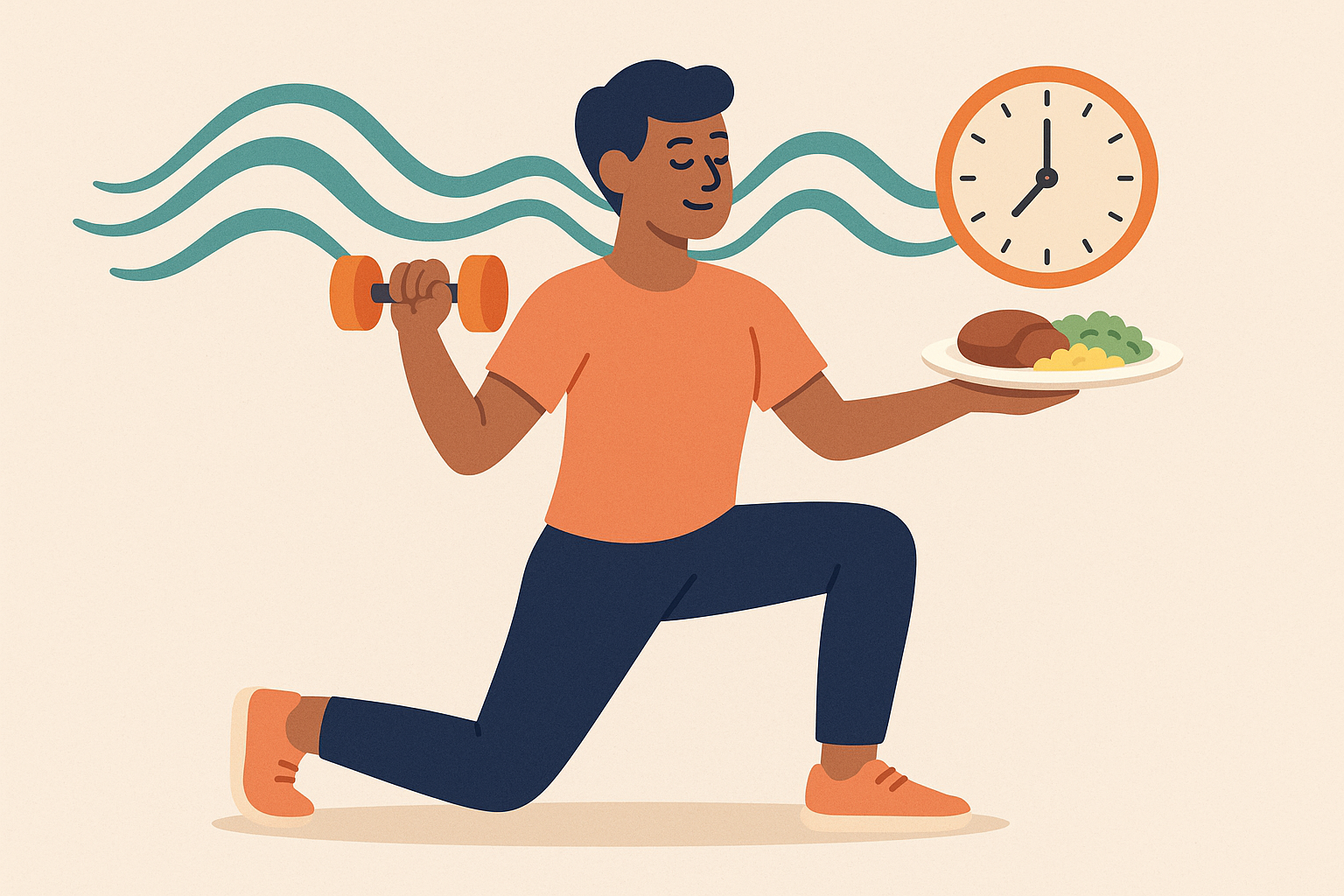
Exercise and OMAD: Finding Your Sweet Spot
This took me months to figure out. Your body runs on different fuel when you’re eating once a day, and your workout timing matters more than you think.
I used to do intense morning workouts during my fast and wonder why I felt like garbage. Turns out, timing your exercise with your eating pattern makes a huge difference.
What works for me now:
- Light movement (walking, yoga) during fasting hours
- Intense workouts 2-3 hours before my eating window
- Post-workout meal becomes my OMAD meal
Everyone’s different, but this timing gives me energy for my workout and optimal recovery afterward.
OMAD Flexibility Framework Checklist:
- ☐ Identify high-stress periods in advance (work deadlines, travel, family events)
- ☐ Create modified eating windows for different scenarios (16:8 for stress, 20:4 for maintenance)
- ☐ Establish clear criteria for when to modify vs. maintain strict OMAD
- ☐ Plan return strategies after planned breaks or modifications
- ☐ Set up accountability partner or tracking system
- ☐ Document what works and what doesn’t for future reference
- ☐ Practice self-compassion during adaptation periods

The Real Talk Section (What I Wish Someone Had Told Me)
Let me be completely honest with you about what OMAD is really like, because most blogs sugarcoat this part.
The first two weeks suck. Not the hunger part—that’s actually manageable. It’s the social awkwardness, the energy fluctuations, and questioning whether you’re doing something completely stupid.
Week 3-4 is when things click. Your energy stabilizes, the social stuff gets easier, and you start understanding your body’s new rhythm.
Month 2-3 is the danger zone. You feel great, so you get cocky and start making exceptions “just this once.” This is where most people fall off the wagon.
Month 6+ is where it becomes lifestyle. You’re not thinking about it constantly anymore—it’s just how you eat.
Some days you’ll want to quit. That’s normal. The goal isn’t perfection—it’s finding something that works better than what you were doing before.
It’s not for everyone, and that’s okay. If you try it for a month and hate it, you haven’t failed. You’ve learned something valuable about your body and preferences.
Can I be honest with you for a second? There were days I stood in my kitchen at 2 PM, staring at leftover pizza, and seriously questioned my life choices. That’s normal. The people who succeed aren’t the ones who never have those moments—they’re the ones who have them and keep going anyway.
Pro tip: Don’t schedule your first OMAD meal during your mother-in-law’s birthday party unless you want to explain intermittent fasting to Aunt Betty for the fifteenth time while she insists you’re “wasting away.”
Your OMAD Reality Check
OMAD isn’t a magic bullet. It won’t solve all your health problems, make you lose 50 pounds in a month, or turn you into a productivity superhuman overnight.
What it can do is simplify your relationship with food, potentially improve your metabolic health, and give you more mental clarity throughout the day. But only if you approach it realistically and give your body time to adapt.
The people who succeed long-term treat OMAD like a tool in their toolkit, not a religion. They’re flexible when life demands it, consistent when possible, and patient with the process.
Here’s what nobody talks about: some days you’ll want to quit. Some days you’ll eat at the wrong time. Some days you’ll question why you’re doing this at all. That’s normal. The goal isn’t perfection—it’s finding something that works better than what you were doing before.
If you decide to try it, start slowly. Maybe begin with 16:8 intermittent fasting for a week, then gradually extend your fasting window. Listen to your body, be patient with the social learning curve, and remember that you can always adjust or stop if it’s not working for you.
Your health journey is exactly that—yours. OMAD might be the missing piece, or it might not be right for you at all. Either way, you’ll learn something valuable about how your body responds to different eating patterns.
After three years of practicing OMAD myself and helping others implement it successfully, I can tell you that it works when you respect both its power and its complexity. Your body is incredibly adaptable, but it needs time and strategic support to make this transition smoothly.
The worst thing that happens is you go back to eating multiple meals a day with a better understanding of hunger, satiety, and your relationship with food. That’s not a failure—that’s valuable self-knowledge.

